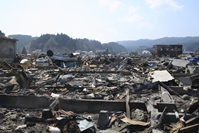Once a natural disaster hits a town or city, local government and emergency responders work around the clock to get things back to normal. In a majority of cases, affected areas go through years of repairs and restoration before operations are fully up and running. These delays could significantly decrease if more neighborhoods had a comprehensive continuity of operations plan that includes clauses about long-term solutions.
A report from the Regional Australia Institute (RAI) found that communities are inadequately planning for actions to take after a natural disaster. This includes events immediately after a storm ends and transitions for up to five years after impact. Findings were based on four significant incidents in Australia. More than $6 billion goes toward recovery efforts every year, but the RAI found that resources could be used more efficiently.
"Understanding and planning around [these disasters] can play a huge role in not just getting communities back on their feet, but making them even better than they were before," RAI chief executive Su McCluskey told the North Queensland Register.
McCluskey and her co-researchers found that even though each storm caused a different assortment of damage, it was long before each occurrence found itself in stable condition. One possible reason could be that instead of trying to restore and innovate affected areas, utility workers were focused on patching it back together.
One example of this situation happened earlier this year in Seaside Heights' famous boardwalk on Seaside Park, New Jersey.
Unexpected damage of Seaside Heights' boardwalk
After Hurricane Sandy, many parts of the state's boardwalk were destroyed, but many people volunteered to build as many parts of the structure as it could for the upcoming summer. Unfortunately, parts of this portion of the walkway caught on fire, impacting many businesses along the strip.
It turned out that the fire was caused by electric wires that were underneath the boardwalk, according to NBC News. The equipment was hidden under the sub floor of the structure and was found to have been heavily damaged by Hurricane Sandy as well.
"During the storm, this wiring and these connections became fully submerged in saltwater and subject to sand and wave action contrary to the intended use," Ocean County Prosecutor Joseph Coronato explained in a news conference. "Over time, degradation of this wiring and these connections occurred."
Though the blaze was unexpected, if utility personnel looked into the electrical equipment before, they would not be in a position to recreate this section of the boardwalk again. Coronato added that the lines were installed in the 1970s, and he is unsure why the wires did not get a second look prior to the construction of the boardwalk.
Communities may not know what to expect in light of these events, but business continuity consultants do. They can help create a plan that will tell residents what to do before, during and after a natural disaster.

